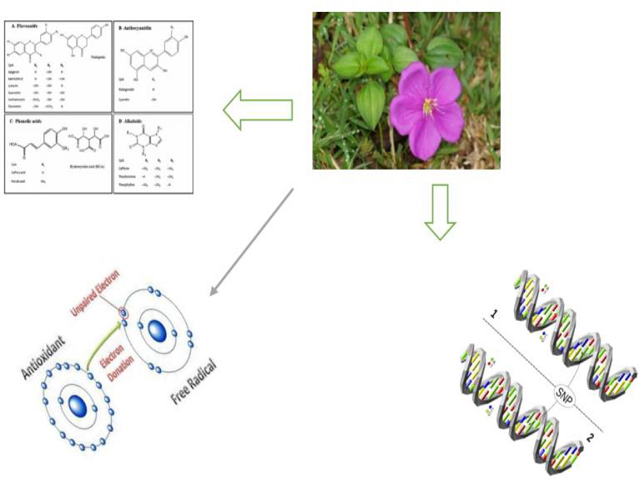Total Phenolic, Flavonoid and Alkaloid Contents, Oxidative DNA Damage Protective and Antioxidant Properties of Methanol and Aqueous Extracts of Dissotis rotundifolia Whole Plant
DOI:
https://doi.org/10.5530/fra.2018.2.13Keywords:
Dissotis rotundifolia whole plant, Reactive Oxygen Species (ROS), Reactive Nitrogen Species, DNA damage protecting activity and Antioxidant activityAbstract
Background: Antioxidants present in natural sources helps to scavenge free radicals and thus, provide health benefits. The main objective for this research is to determine phenolic, flavonoid, and alkaloid contents, nitric oxide scavenging activity, hydroxyl radical scavenging activity, and DPPH-scavenging activity, ferric reducing power of the extracts and DNA damage protecting activity to evaluate the antioxidant potential of various extracts. Materials and Methods: In vitro antioxidant potential of the D. rotundifolia extract was evaluated using 1, 1‑diphenyl‑2‑picrylhydrazyl (DPPH), nitric oxide (NO), and hydroxyl (OH) radical scavenging assays. Ferric reducing power ability of the extract was also examined using tannic acid, and ascorbic acid as standard. Concentrations of plant extracts ranging from 0.02 to 0.10 mg/ml were prepared and mixed with appropriate volumes of reagents. Results: Methanol extract of D. rotundifolia exhibited higher content of phytochemical compounds (alkaloid = 12.4 mg QE/g; flavonoids = 19.3 mg QE/g; and phenols = 18 mg QE/g) at concentration 0.1 mg/ml compare to the aqueous extract (alkaloid = 9.1 mg QE/g; flavonoids = 10.5 mg QE/g; and phenols = 16.5 mg QE/g). An over-all trend found in the present study highlights the fact that the methanol extract have better antioxidant capacities (DPPH, NO, OH and FRAP) than the aqueous extract. D. rotundifolia extracts exhibited considerable protection to the damage of native supercoiled circular at concentrations, 0.1 mg/ml and 10 mg/ml. Conclusion: The study showed that the extracts can competently protect the body against oxidative stress, therefore can be used as a source of potent natural antioxidant compounds.
Downloads
Metrics





